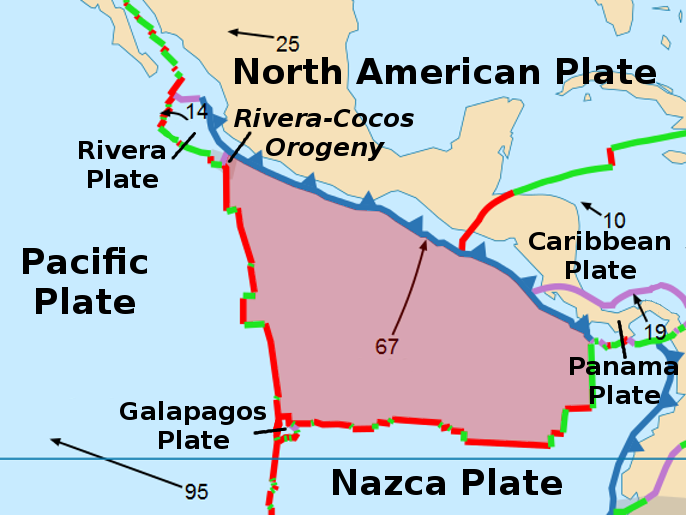The International Bank for Reconstruction and Development (IBRD), the main component of the World Bank Group, has issued Latin American earthquake-linked catastrophe bonds (known as Cat bonds) of nearly $1.4 billion.
The issuance is composed of five classes of World Bank Bonds, and offer natural disaster protection to the Pacific Alliance trade bloc – Chile, Colombia, Mexico, and Peru.
The Pacific Alliance catastrophe aggregates to a massive $1.36 billion, making it the largest insurance-linked security (ILS) ever issued by the World Bank. This issuance is notable as it constitutes a significant part of all the World Bank’s combined catastrophe risk transactions, bringing them to a total less of $4 billion. The bonds act as risk-transfer transactions, essentially moving the earthquake risks from poorer countries to interested investors.
Latin America is especially susceptible to natural hazards of this nature. A veritable myriad of separate tectonic plates converges in the area, leading to frequent and potentially devastating earthquakes. Colombia, Peru, and Chile, in particular, are located on the verge of the oceanic Nazca Plate, placing the countries in an area of recurrent seismic activity.
Mexico, on the other hand, is bounded by the Cocos Plate which is probably responsible for both the 1985 Mexico City earthquake and the more recent 2017 Chiapas earthquake.
Being located in regions plagued by this type of tremors is a major source of uncertainty in Latin America, the risks of which serve to deter long-term investment.
The insurance-linked security is intended to counteract this inherent uncertainty. If triggered, the Cat bonds will give the affected Pacific Alliance member states a reliable and readily available source of capital, to expedite relief delivery and necessary reconstruction. Historically, post-disaster financing and relief funding have been notoriously sluggish, prolonging the amount of time it takes for disaster-stricken countries to get back on their feet.
The entire issuance is divided into five classes; two tranches of two-year classes for Mexico and one three-year class each for Chile, Colombia, and Peru. The classes are the Chilean CAR 116, the Colombian CAR 117, the two Mexican CAR 118 and CAR 119, as well as the Peruvian CAR 120. Notably, the capital-at-risk notes are all differently sized, with different terms, however, all specifically provide earthquake coverage.
The largest of the Cat bonds is Chile’s CAR 116, sized at $500M. This large amount is motivated by Chile’s long coastline, which stretches from Peru to Cape Horn, making the country exceptionally prone to earthquakes.
Colombia’s CAR 117 is the runner-up bond, weighing in at $400M, and the issue size of Peru’s CAR 120 is $200M. Mexico’s larger Cat bond, the CAR 118, is pegged at $160M, whilst the smaller CAR 119 is sized at a still notable $100M.
Moreover, the bonds’ triggers are dependent on datasets supplied and analyzed by the US Geological Survey, ensuring that the risk-transfers are backed by a recognized and trusted geological agency.
The issuance is arranged by Aon Securities and Swiss Re, who are the joint structuring agents for the deal. They are joined by Citi (aka Citigroup) in acting as the bookmakers of the bonds. The web-based catastrophe modeling software developer AIR Worldwide is the modeling and calculation agent supporting the transaction.
Aon Securities CEO, Paul Shultz, expressed his gratitude over partaking in the issuance and highlighted the importance of securing efficient fund of emergency capital. He went on to mention that this deal may very well help lay the foundation for establishing similar bonds for other countries. Coalitions of nations working together to set up Cat bonds, such as the Pacific Alliance, allows for costs to be cut in developing the risk-transfer transactions.
Swiss Re’s Chairman of Global Partnerships, Martyn Parker, noted that Pacific Alliance working together to manage their financial exposure to natural disasters make a powerful statement. Through actively seeking a way to lessen the risks of natural disasters, it can be argued that the leaders of the Latin American countries made significant strides in promoting long-term economic development in the area.
John Modin, Citi Managing Director, stressed that Citi was proud to be a part of the record-breaking issuance. He also emphasized that although a Cat bond of this size is an important milestone in itself, the largest gains are the humanitarian ones; access to funds and capital can be absolutely vital if disaster happens to strike. Furthermore, this sort of economic protection acts as a powerful incentive for long-term funding, alleviating the inherent risk associated with making investments in disaster-prone areas.
The large, five-part issuance essentially serves as reinsurance for the covered Latin American economies. By transferring some of the risks present in zones of recurring seismic activity from comparably poor, developing countries to investors, the IBRD is able to create a more favorable investment situation in the protected countries.
While the Pacific Alliance issuance specifically relates to earthquakes, it is easy to see potential applications for similar forms of reinsurance in other parts of the world.
Floods, hurricanes, storms or volcanic eruptions are just some of the many natural hazards that can seriously discourage long-term investments. Developing economies all around the world would be able to benefit immensely from transferring natural disaster risks to investors.cat
Catastrophe bonds of this nature can serve to give poorer countries a form of ”breathing space”, allowing them to construct infrastructure and companies to make considerable investments without worrying about potential natural hazards.
On the other side of the balance, investors appreciate extremely this form of investments. Because they offer significantly higher returns than corporate bonds – as they are detached from economic crises and trade cycles and therefore can act as an effective diversifications in their portfolios.







